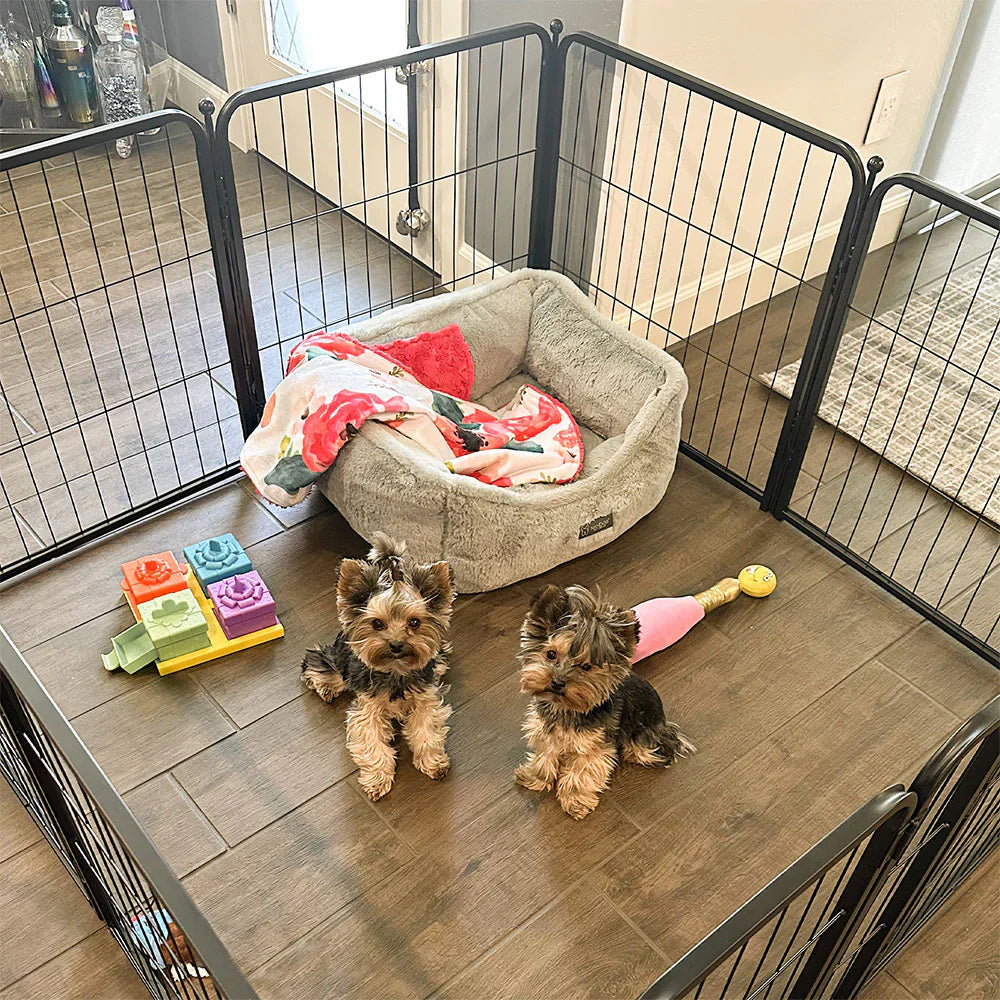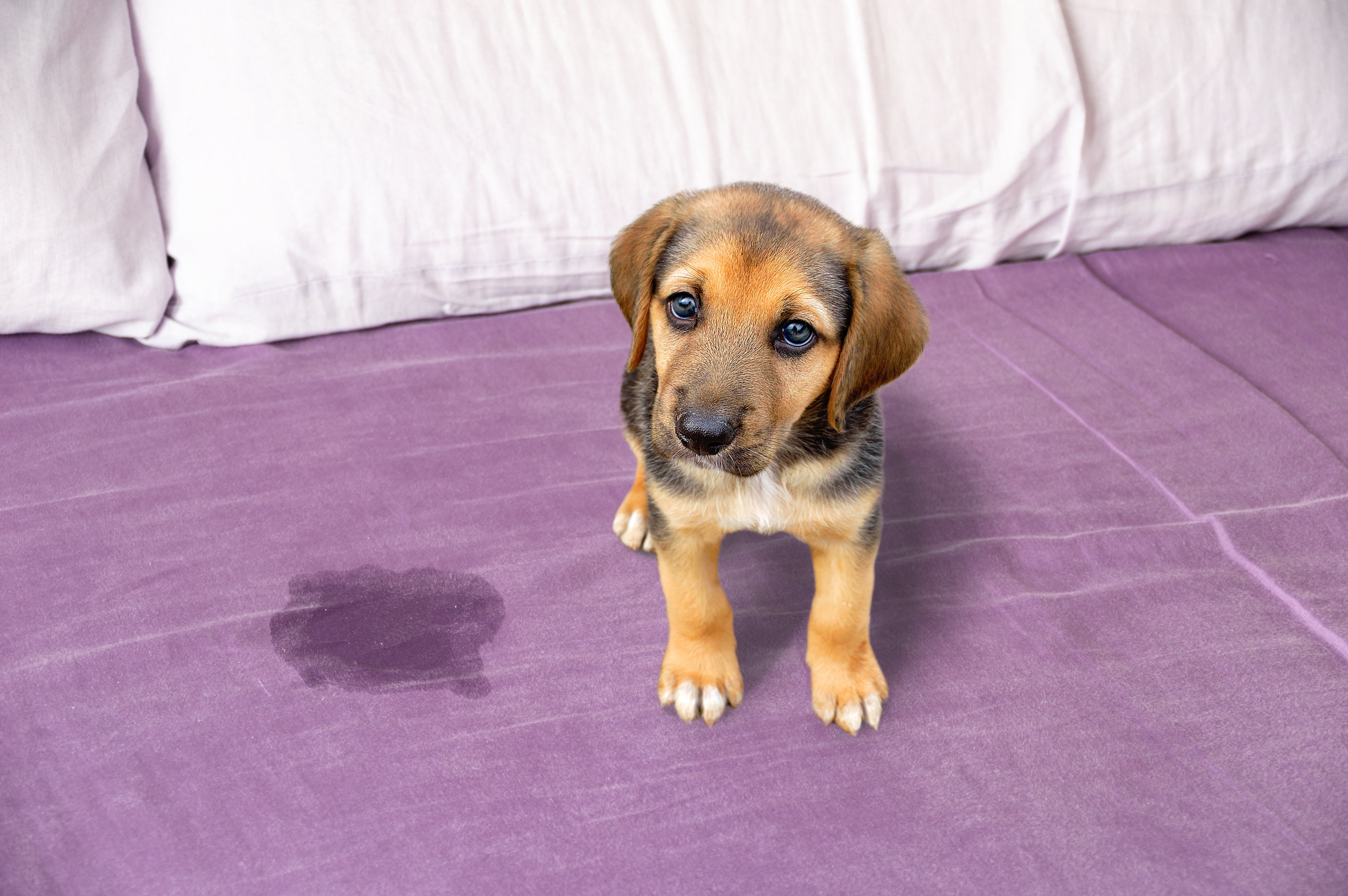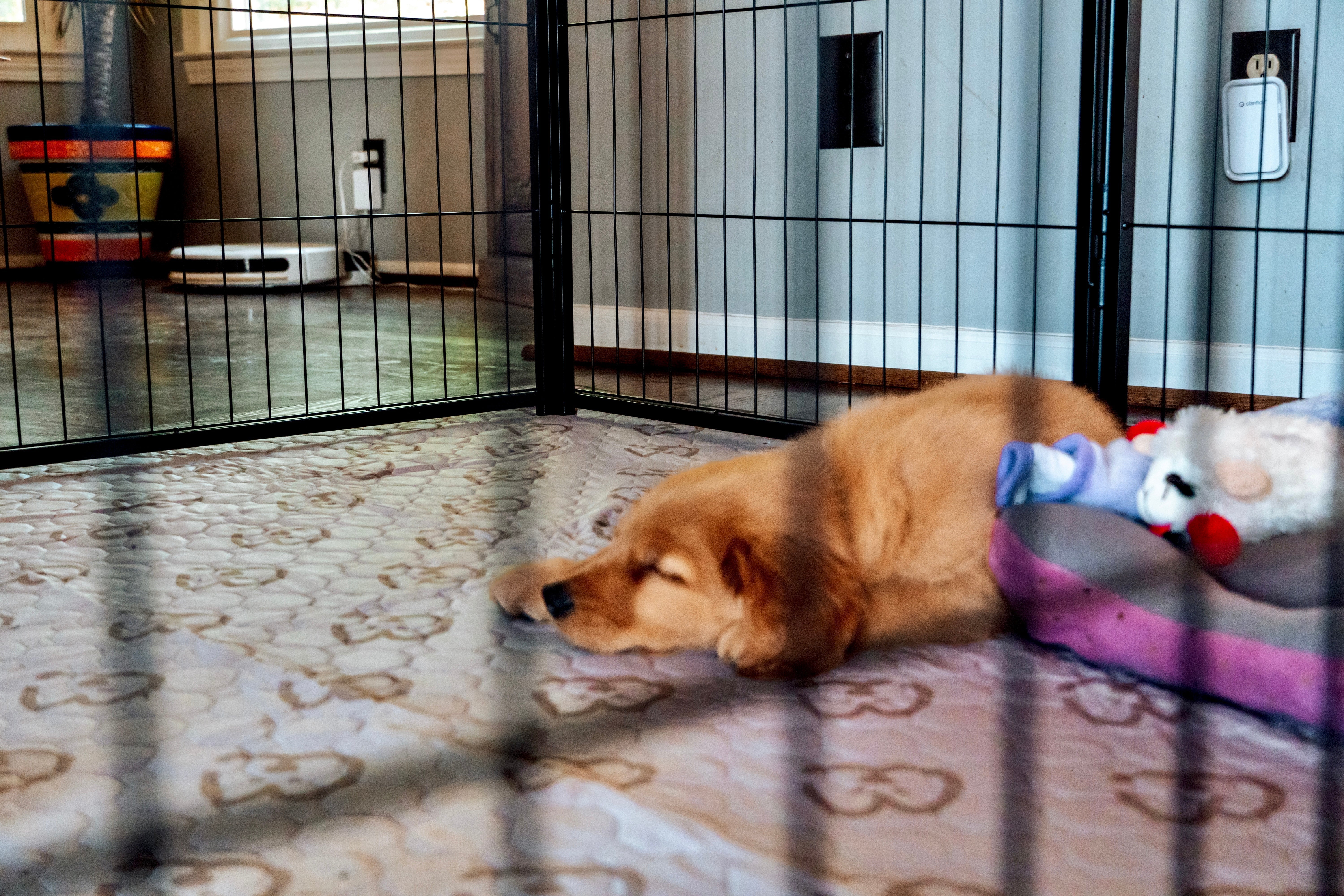How to Stop Dog Playpen From Moving?
September, 10, 2024 Posted by FXW Life

It was just another ordinary day.
Before heading out, I put my dog in the playpen, knelt down, and told him softly that I’d be gone for a little while. I asked him to be quiet and wait for me to come back. He gave me those sweet, obedient eyes, almost as if he was promising to behave. Feeling reassured, I left the house.
Two hours later, I came home, fully expecting to find everything exactly as I left it. But when I walked in, my once neat living room was in total chaos.
My dog greeted me at the door, and that’s when it hit me—wait a minute, wasn’t he supposed to be in the playpen? That’s when I realized he’d been moving the playpen all around the house!
There were bits of shredded diapers on the floor, my shoes were chewed up, and one of the flowerpots was knocked over with dirt scattered everywhere. My living room looked like a complete disaster zone.

And no, I’m not making this up. Thankfully, he wasn’t hurt. But I did learn a valuable lesson that day—a playpen can tip over or move, and it could’ve hurt him or pinched her paws.
So instead of blaming him for the mess, I realized the real issue was that I hadn’t gotten the right playpen or didn’t use it properly.
How to Stop a Dog Playpen from Moving?
1. Choose a Sturdy, Heavy Playpen

Don’t underestimate small dogs. When they have too much energy, they may bite, drag, push with their paws, or even headbutt the playpen.
A heavy playpen, like one made of metal, won’t move easily. This type of material also ensures durability, making it perfect for dogs who love to chew or climb. With the right playpen, you’ll avoid the hassle of constantly cleaning up after your dog’s little adventures.
2. Pick a Playpen That Won’t Tip Over

Make sure the panels don’t fold completely when closed.
Why is this important? The playpen needs to maintain a safe angle to keep the panels standing firm. Even if the playpen moves, it shouldn’t collapse, which could otherwise hurt your dog and create a safety risk.
A stable design means more peace of mind for you, knowing your dog is safe.
3. Add a Non-Slip Mat Underneath

Many homes have smooth floors, like marble, granite, or hardwood. A non-slip mat under the playpen adds grip, keeping it in place.
It also protects your floors from scratches and prevents your dog’s nails from getting damaged. Some playpens come with built-in non-slip pads, which can reduce movement even further.

Plus, a washable mat that absorbs spills and accidents keeps the area clean. It’s a simple solution that brings more comfort to both you and your dog.
4. Secure the Playpen to the Wall

Attaching the playpen to the wall is an affordable option that adds extra stability. It also gives you flexibility to get creative with your space.
Before securing the playpen, make sure your dog has enough room to move around freely.
Also, remember to check the wall brackets regularly to ensure they stay secure. This small step helps prevent accidents and keeps your dog safe.
5. For Outdoor Use, Choose a Playpen with Stakes

If you’re using the playpen outside, stakes are a great way to secure it.
Push the stakes into the ground for extra stability. The pointed ends make it easy to insert into the soil, while the rounded tops help protect your dog’s paws.
This ensures that even in the yard or at a campsite, the playpen stays in place, giving your dog a safe, contained area to enjoy.
What Else?
If your playpen has these features, most of your problems will be solved. But being a great dog owner also means understanding your dog’s behavior.

Age Differences
Puppies and adult dogs behave very differently.
Puppies are curious, exploring the world around them, and often haven’t been trained yet. They might charge at the playpen like an excited kid.
Accept their mischief—it’s part of their growing process. Just like your parents accepted your childhood antics, it’s important to have patience with your puppy.
Lack of Exercise
If your dog doesn’t get enough exercise or has no set routine, they might push the playpen out of boredom.
To prevent this, create a daily schedule that includes walks, playtime, and training.
Dogs are adaptable and can be trained to follow routines. Regular exercise will help them burn off energy and reduce the urge to act out.
Try these steps today and enjoy a cleaner, safer, and more peaceful home, for both you and your dog.



